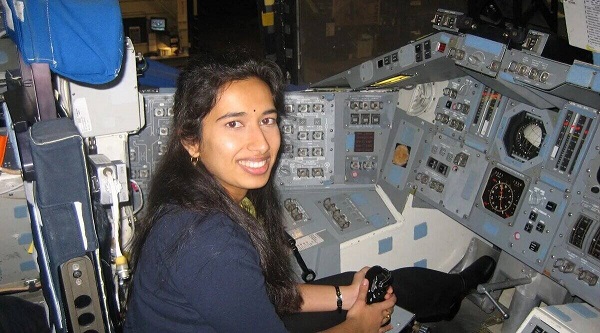India's women scientists breaking barriers in space exploration
A video of NASA's Perseverance rover landing went viral early this month.

New Delhi: A video of NASA's Perseverance rover landing went viral early this month. The video making rounds on the internet featured a bindi-sporting Indian-American aerospace engineer named Swati Mohan, who was one of the many people who spearheaded the development and the landing system for the rover.
Swati, who skilfully landed the spacecraft, works at the National Aeronautics and Space Administration's (NASA) Jet Propulsion Laboratory (JPL). She is one of the many Indian women scientists, engineers and missile developers, who are leaving a trail for future generations. "Every day, there are so many exciting things happening that I am always in constant awe of what we get to do, and see, and learn, and the wonderful, incredibly talented people who make it possible. All the projects at JPL seek to expand human understanding, and are almost always first of a kind in some way," Swati said. Neeta Lal, writing for the South China Morning Post, said there are many other Indian women shooting for the skies as successful space scientists, engineers, satellite launchers, missile developers and project heads of complex interstellar missions.
"Tessy Thomas is one of them. Known as the 'missile woman' of India, the 57-year-old, who has a doctorate in missile guidance, was the first woman scientist to helm an Indian missile project," Neeta said. Tessy was associated with Agni Programme right from its developmental flights. She has designed the guidance scheme for long-range missile systems, which is used in all Agni missiles. She lead a major project AGNI-4 as Project Director, for a state-of-art system with many new technologies for the first time and successfully flight tested and proven.
Also Read |
NASA's Perseverance rover sends sneak peek of Mars landing
Yet another example of Indian women in science is Aerospace engineer Ritu Karidhal Srivastava. "While serving as the deputy operations director of India's Mars orbiter mission Mangalyaan in 2013, she helped India make history in becoming the first nation to reach Martian orbit in its maiden attempt. Later, as mission director of the Chandrayaan-2 mission at the Indian Space Research Organization (ISRO), Srivastava helmed one of India's most ambitious lunar projects, detailing and executing the craft's onwards autonomy system," Neeta said, as quoted by the SCMP.
As per Neeta, despite the stellar achievements of these women scientists, and dozens of others, critics say India is yet to successfully tap the full potential of its female scientific community. Women constitute just 14 per cent of the 280,000 scientists, engineers and technologists in research development institutions in India, according to the United Nations.
Also Read |
ISRO launches India's largest LVM3 rocket from Sriharikota

"Looking to address the deficit, India's new Science Technology and Innovation Policy 2020 aims to encourage women scientists through various initiatives. The government is setting up 11 chairs in the name of 20th-century women scientists, across Indian universities in fields like cytogenetics, organic chemistry and social sciences," Neeta wrote. Another big name in science is electronics systems engineer Muthayya Vanitha, from Chennai, who joined ISRO as a scientist-engineer over three decades ago, SCMP report said.
Recently Vanitha said in an interview with Forbes said although her engineering skills opened up many career doors, when ISRO offered her the project director's job for Chandrayaan-2 she at first doubted herself but then went ahead anyway. "When life throws challenges at you, it will also give you the strength and the grace to face the challenges," Vanitha said. (ANI)
 Dynamite News
Dynamite News 